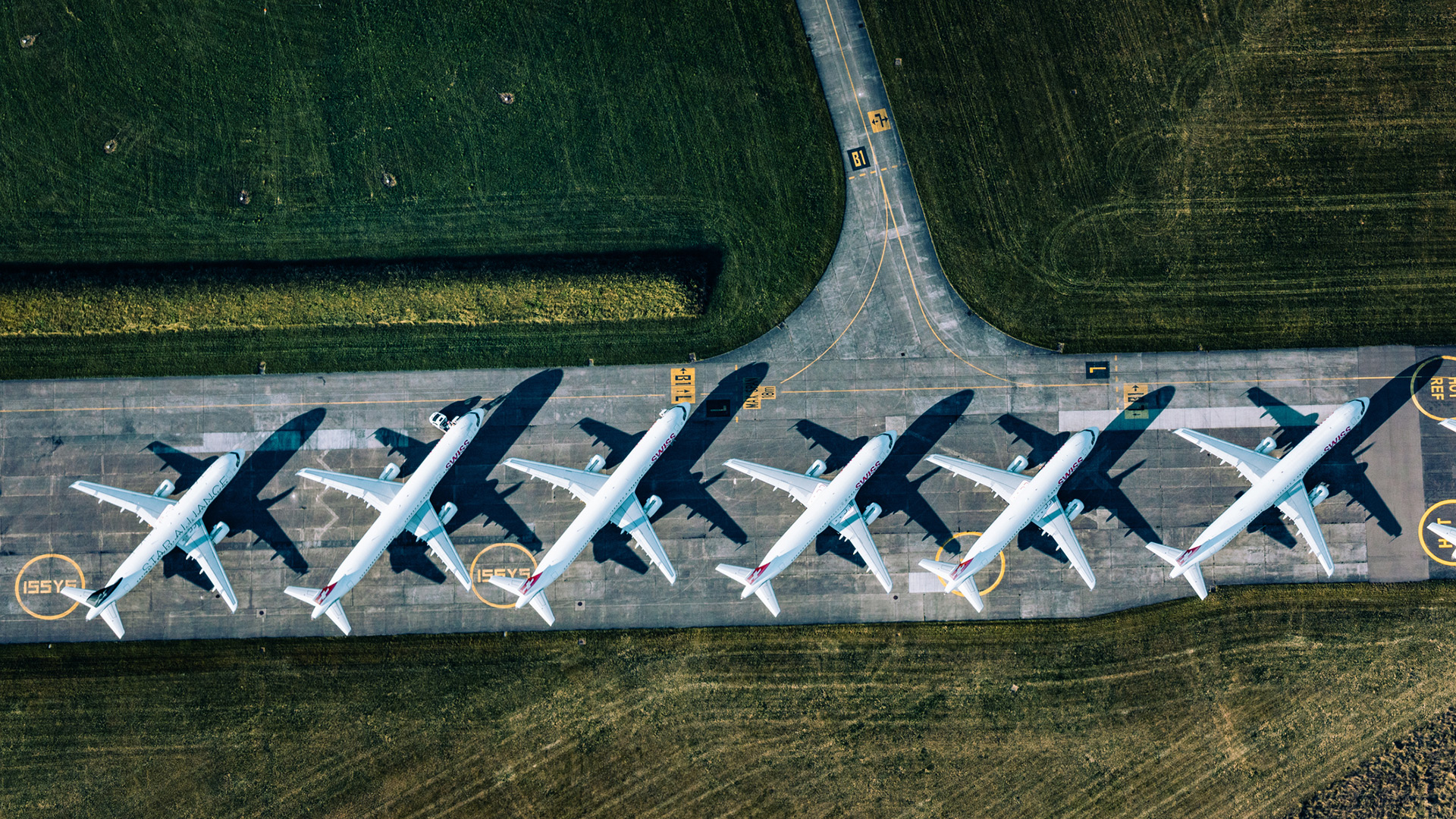With an influx of aircraft storage, will there be an increased strain on parts supply?

With two-thirds of the global fleet parked for an indefinite period, what does that mean for operators and MROs when there is a surge of reentries?
For many airlines in the industry, this is not a hyperbolic question. An entire world of isolation, travel-bans, and cancelled flights have created an exceedingly significant overpopulation of grounded aircraft, and many airlines are taking steps to ensure that those aircraft are secured if AOG times extend from weeks to months or even years.
As far back as March, the industry was already seeing airports transformed into default parking lots for aircraft due to Covid-19. In April, it was reported that KLM had essentially turned the runway of Schiphol Airport blue as the airport became the parking lot for a large percentage of its entire fleet. At the time of the writing of this article, two-thirds of the global fleet is still grounded.
In it for the long-haul
While no one could have predicted the amount of chaos that this pandemic is shedding on the aviation industry, there are procedures in place for long-term storage of aircraft. At this point, it's safe to say that the vast majority of the aircraft currently being stored has undergone proper procedural maintenance to ensure airworthiness. However, there are also a set of maintenance procedures that will need to be conducted when re-entering into service.
The grounding and re-entry into service of aircraft is a common practice, but never to this sheer magnitude and scale. So to gain further illumination on the entire process, we spoke with our product manager Jesper Allenberg, to enquire if these storage and re-entry processes are something that is well understood.
"There are standard processes for parking and storing aircraft for longer periods, which are stated in the aircraft maintenance manuals," Allenberg said. "These manuals are tailored to the aircraft and are approved by local authorities as per the Approved Maintenance Program (AMP). It is the responsibility of the operators, or whoever is responsible for the aircraft's airworthiness, to ensure the storage processes stated in the manuals are being carried out. Tasks need to be verified when complete, as part of the regulations. They have to be done to maintain the airworthiness of the aircraft."
In April, IATA released a bulletin entitled the 'Guidance for ground handling during COVID-19'. Along with a subsequent bulletin on 'Guidance for ground handling return to service'. The bulk majority of the information mirrors what our own Jesper Allenberg stated, with references to aircraft manuals in collaborations with civil aviation authorities. In IATA's bulletins, only small amendments were made to sections regarding "cleaning, good hygiene measures and consistent use of appropriate personal protective equipment (PPE)" during the ground handling processes.

A re-entry surge
Currently, it's not possible to predict when the large majority of the global fleet will begin to enter into service again. According to the New York Times, some countries are still imposing stricter travel restrictions, rather than easing them. It stands to reason that aircraft will continue to be grounded, many for an indefinite amount of time. It is difficult to say whether the number of grounded aircraft has plateaued, or if the cargo fleet will also be affected by the pandemic.
With the majority of the global fleet grounded, the obvious next step is to prepare for their eventual re-entry into service. However, it also begs the question to whether we should expect a surge in demand for maintenance parts needed for that process?
What precisely is needed?
Following up with our product manager Jesper Allenberg, we wanted to outline more specifically what operators are going to need to follow the proper procedures of aircraft storage. This could provide an overview of what specific parts could potentially become more in demand, and more and more aircraft are being grounded indefinitely.
"Whether an airline has an inhouse MRO or line-maintenance facilities, or if it is outsourced to an independent MRO, typically the process entails going through the aircraft manuals and various other documentation to build a material list. This will outline everything that is needed for the scope of work that will need to be performed on the aircraft when entering a parking or storage program, and subsequently before re-entry into service," he said.
"A lot of what is needed are consumable materials, like lubricants and oils, as well as expendable parts like O-rings, nuts, bolts, etc. Due to the expediency with which many aircraft are now being grounded, we've been compiling these parts to make it easier for operators."
It's anyone's guess whether the demand for re-entry into service maintenance parts will spike in the coming weeks and months. All of us in the aviation industry are patiently waiting to see how this global situation pans out – and when countries start lifting their travel bans.
However, as we are all in this together, and long-term aircraft storage is unfortunately inevitable for many airlines, we have been working on utilising our knowledge and our supply experience to provide an expedited process for procuring and securing access to the parts needed for storing an aircraft for the long term.